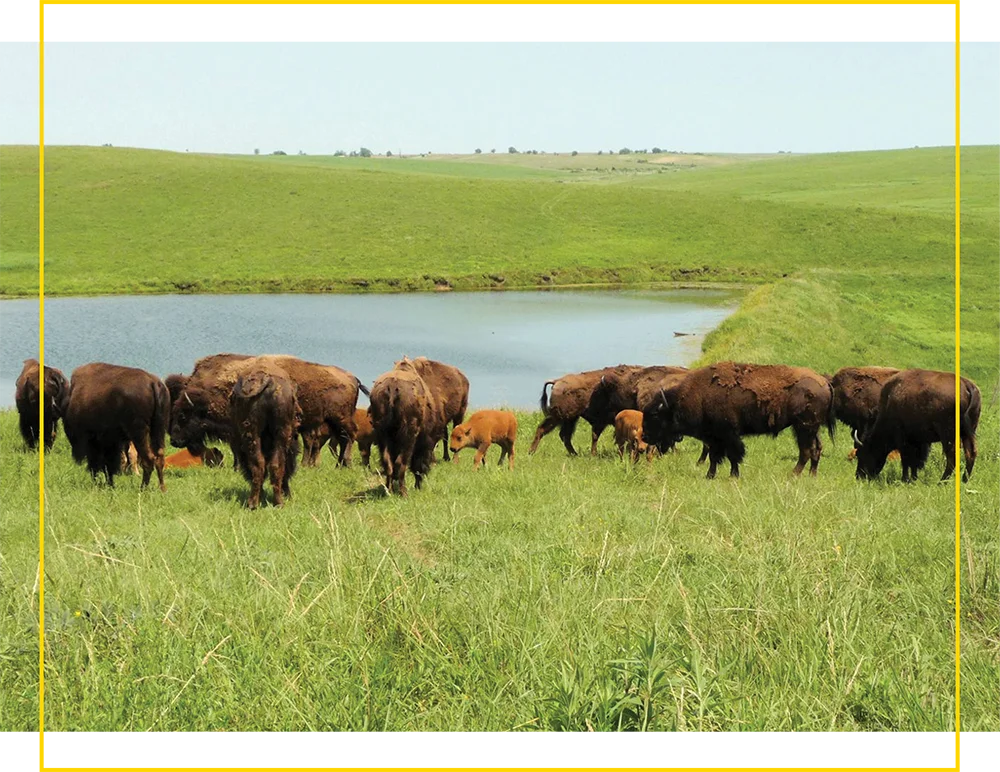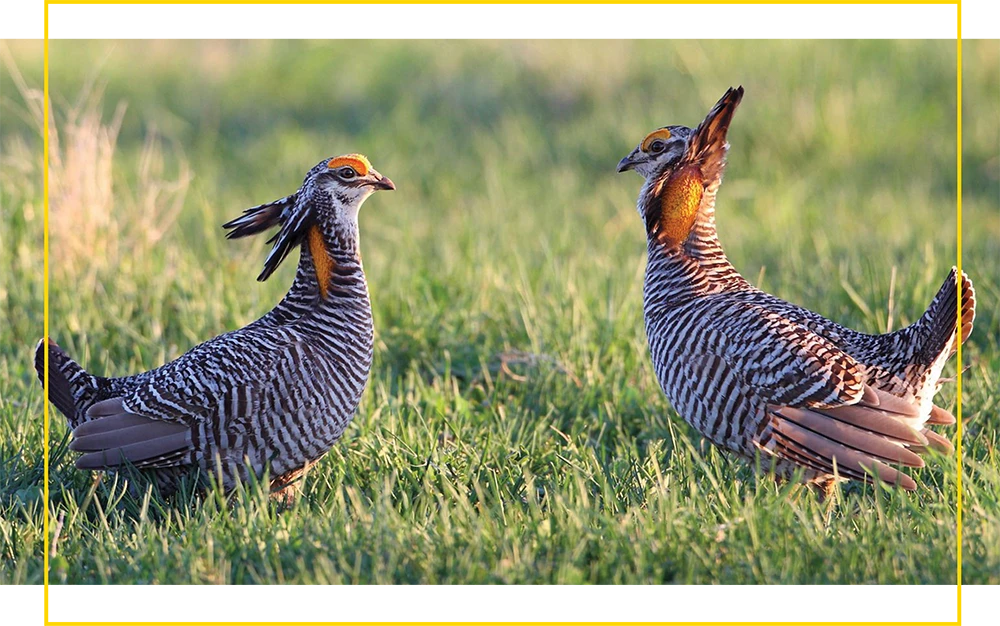Prairie Renaissance:
Restoring
America’s
Grasslands
America’s tallgrass prairies are working as hard as the rainforests in the fight against climate change. Once sprawling across millions of U.S. acres, these vital ecosystems are now among the most endangered landscapes on the planet.
Preserving Native Grasslands
“This project is about restoring the landscape between southern Iowa and northern Missouri,” said Keith Summerville, Paul and Claudia Schickler Executive Director of the Jay N. Darling Institute. “This area used to be 99.5% tallgrass prairie that was naturally grazed by bison before it was converted to pastures for livestock. European settlers and colonization converted this land almost entirely to cool-season species that can’t handle drought, which is increasingly becoming an issue for this area. The goal of this collaboration is to take what was converted from habitat to pastures and turn it back into native prairie lands.”
Frank Loncarich, grasslands systems manager at the Missouri Department of Conservation, highlighted the urgency of this mission. “Tallgrass prairie is one of the most imperiled ecosystems in the country, and probably in the world,” he said. “Missouri had 15 million acres of prairie, and now less than 45,000 acres remain. These are globally significant natural landscapes worth preserving.”


Engaging the Next Generation of Conservationists
Two students from Drake’s DarlingCorps program, Rory Hetz and Madelyn Christian, were directly involved, and gained hands-on experience in prairie restoration and conservation during their summer internship at The Nature Conservancy’s Dunn Ranch in Missouri. They lived and worked on the ranch throughout the summer and learned about native grassland management.
Hertz, a junior in environmental science with a concentration in biological conservation, said she enjoyed the hands-on work. “I had never touched a chainsaw before, but I’m getting more comfortable with it now. When I think about my future, I see myself staying in the U.S. and working in conservation. This experience has shown me how impactful this work can be.”
Christian, also a junior in environmental science, shared her deep connection to the land. “My family has hunted for generations, and my dad taught me about the importance of managing wildlife populations and conserving the land. Working on the prairie restoration project has been incredible. Seeing native plants and wildlife thrive in restored prairies is amazing. We’ve also been involved in prescribed burns, which are crucial for maintaining prairie ecosystems.”
This project is about more than just conserving land; it’s about building a sustainable future through collaboration and action. The partnership with Iowa and Missouri organizations demonstrates the power of collective effort in addressing environmental challenges.